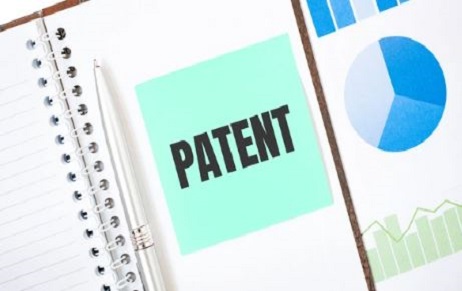Bodin argued that sovereignty is indivisible and absolute and that it should be concentrated in…
Patent Valuation: Understanding the Worth of Innovation
Introduction
The process of patent valuation helps in ascertaining the economic value of a patent. In the present innovation driven economy, patents are important for protecting rights and giving inventors and firms competitive edge. A patent is an exclusive grant to the inventor of an invention to prevent others from making, using or selling it without his/her permission. However, there is much more to a patent than legal protection. Businesses, investors and inventors need to understand patent valuation in order make informed decisions about intellectual property assets.
Importance of Patent Valuation
- Licensing and Selling
Patents can be entirely licensed or sold off to different businesses. An accurate evaluation helps in negotiating equitable and reasonable deals, thus providing the required royalties for the patentee.
- Mergers and Acquisitions
During mergers and acquisitions, patents are usually huge assets. Correct valuation guarantees that the buying company knows how much the acquired intellectual property is worth.
- Investment Decisions
Investors, as well as venture capitalists, evaluate a company’s potential growth as well as profitability by establishing the value of its patent portfolio.
- Strategic Planning
Patent valuation directs R&D investment decisions at firms that conduct research & development activities while focusing on innovative ventures and aligning innovation strategies with market opportunities.
- Financial Reporting
For publicly traded companies, an exactitude in patent valuation is vital for financial reporting and compliance with accounting principles.

Methods of Patent Valuation
Patent valuation can be complex due to the uniqueness of each patent and the myriad factors influencing its worth. Several methods are commonly used to assess the value of patents, each with its advantages and limitations.
- Cost-Based Methods
Cost-based strategies determine a patent value based on the amounts spent in developing the patented technology. This includes R&D expenses as well as other related costs such as legal fees. The two basic approaches are:
- Historical Cost Method: Actual costs incurred in developing the patent are calculated using this method. It is simple but may not take into account present market values or future possibilities for the patent.
- Replacement Cost Method: The cost of duplicating the patented technology is estimated by this method. It considers what it would take to create a similar invention from scratch. This approach can give a more accurate valuation particularly for newer patents.
- Market-Based Methods
Other patents sold or licensed can be used to determine the value of a patent in question using market-based approaches. There is reliance on market data and this approach is helpful especially if there are similar transactions to compare with. One of the primary methods under market-based approach is
- Comparable Market Transactions: This method involves looking at recent sales or licensing of similar patents so as to have an idea on how much the subject patent should go for. It necessitates a lot of historical records regarding patents transactions and could be difficult when there are only few comparable deals available.
- Income-Based Methods
Income based methods estimate the value of a patent by looking at how much revenue it is expected to generate in future. These approaches assess if a patent will add value to revenues, provide cost savings or both. The principal income-based methods include:
- Discounted Cash Flow (DCF) Method: The DCF technique predicts future cash flows that result from the patent and then discounts them back to present values through discounting rate. Financial projections need to be developed in detail as well as assumptions about market conditions, competition, and lifespan of the patent.
- Relief from royalty method: It is a method by which the value of a patent is estimated, based on the amount of royalties that are supposed to be paid if patented. The process uses techniques that are based on financial engineering; for example, forecasting future income. It is a simple method that works well and is easily understandable. It is noted that it is difficult to estimate the projected income from the technology or product under development.
Factors Influencing Patent Valuation
Several factors can significantly impact the valuation of a patent:
- Technological Advancements: It’s the patent’s edge, the attraction of the brand through its technical leap, and the uniqueness and novelty that add value to it. The patents that propose such innovations or that of research which provides the solution to acute problems are the most profitable.
- Market Potential: The amount of market for the particular technology and on the other hand its growth potential is what will determine the value of the patent. Technologies with divergent use and a high demand generally determine the growth rate of a market and thus they are expected to be more valuable.
- Competitive Landscape: The existence of technologies that compete and the level of competition in the market have an impact on the valuation of the patent. A patent that makes the company’s products better that the competitive products on the hard-fought market situation would have more value than any other patent.
- Legal Strength: The sustainability of the patent’s claims and its right to take it to the judiciary are the foundation to the valuation of the patent. A patent whose scope is both broad and strong and is opposable by few is worth more. This patent is worth less if it will not be fast and it will not have a competitive advantage so it is the most of the two categories.
- Remaining Patent Life: The time that the patent is under protection will express its value. The patents which are nearer to their cessation time would have a smaller value instead of those that have more life to them.
- Commercialization Potential: The proper way to forcibly bring the technology to the market and stock control items such as the manufacturability, food and drug administration approvals, and distribution channels challenge the value of it.
Challenges in Patent Valuation
Valuing patents is inherently challenging due to several factors:
Despite the fact that patents often act as a source of income for their owners, they are not a guarantee of a stable income, income may not come at all and may also be greatly influenced by such uncontrollable factors such as market adoption, competition, and technological advancements.
Valuation also exhibits subjectivity as different evaluation techniques and assertions can be among the reasons for such variations. Valuation usually engages in the speculative behaviors, as the financial market is always moving and the potential effects of a contract on revenue are uncertain.
Unavailability of the Transactional Data: The patent transaction process does not allow the association of similar patents, which results from the situation that technologies that are recently produced or improved are hard to find. The availability or even scarcity of information drives risk in the analysis and income approach.
Conclusion
The patent evaluation is a major part of a company’s asset management strategy in the highly innovative economy of the present. One of the most effective methods for the determination of the value of a patent is the search for the synergy among numerous factors, the choice of the lie-isotopes to be utilized and the acknowledgment of the inherent difficulties. Right patent valuation is what drives corporations, investors, and inventors to make clear choices, find settlements that are fair for all parties involved and project their innovation more strategically. Many innovations get outdated and the value of patents on the rise, therefore knowledge of patent valuation will be the driver of the decision to invest in a newly introduced technology in today’s competitive market.
Author: Neha Vivek A, in case of any queries please contact/write back to us via email to chhavi@khuranaandkhurana.com or at IIPRD.


